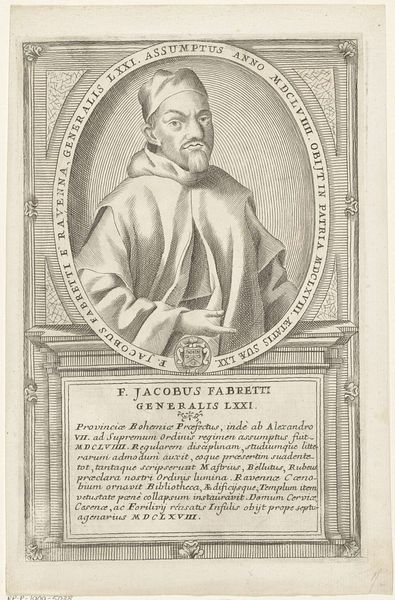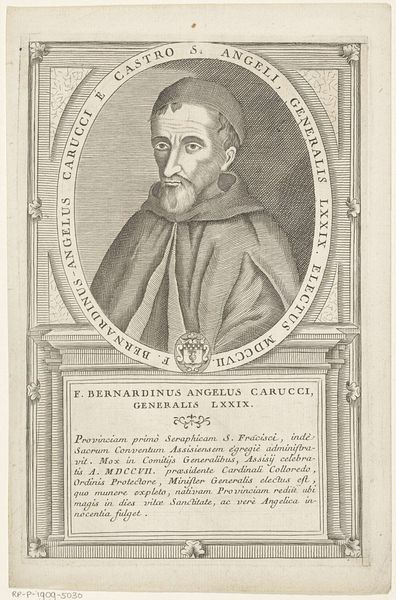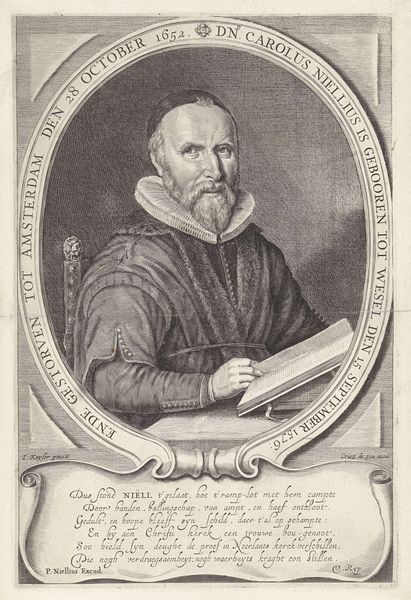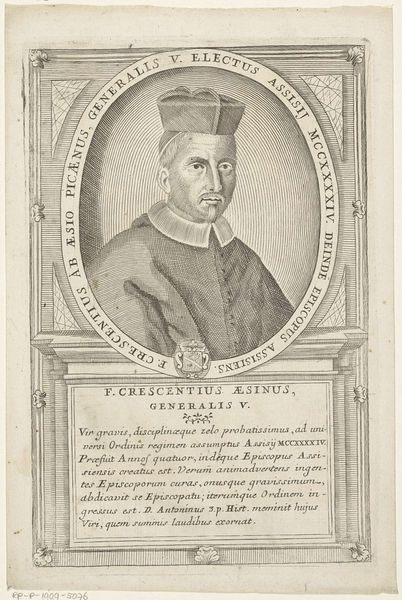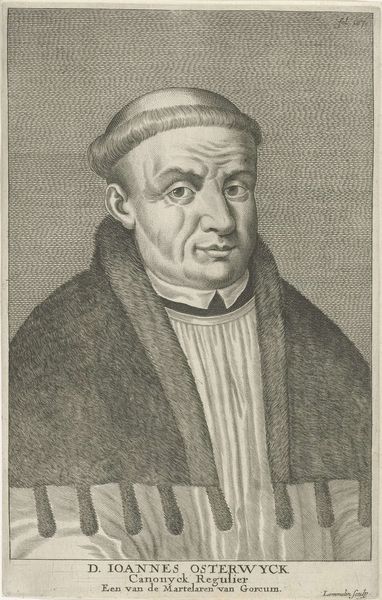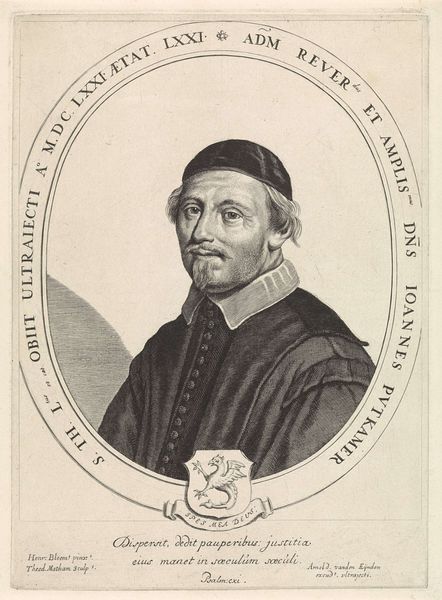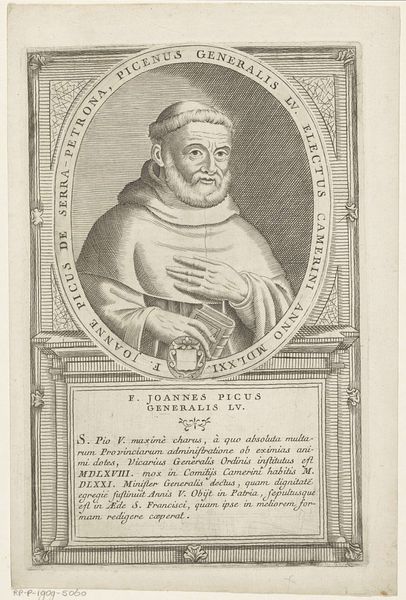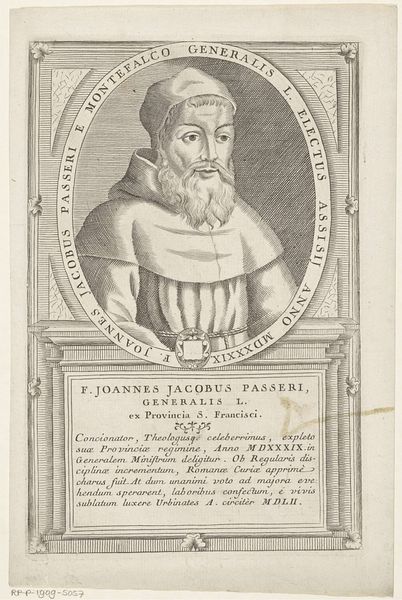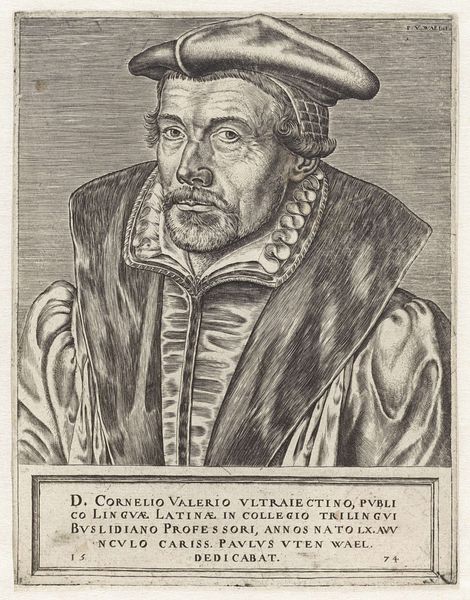
print, engraving
#
portrait
# print
#
old engraving style
#
line
#
history-painting
#
academic-art
#
engraving
Dimensions: height 170 mm, width 115 mm
Copyright: Rijks Museum: Open Domain
Editor: This is "Portret van Johannes Beverus," an engraving by Philips Galle, made sometime between 1604 and 1739. The detail achieved through such fine lines is captivating, almost hypnotic. I'm curious, what feeling does this evoke for you? Curator: It whispers of scholarly dedication, doesn’t it? A portrait isn't merely a likeness; it’s an assertion, a presentation of self to posterity. Think of Galle, etching away, line after meticulous line, channeling not just Beverus's face, but his very essence, the aura of intellect. Can you almost feel the weight of those philosophical tomes surrounding him? It’s not just seeing, but feeling the weight of intellectual history, you know? Editor: The weight, definitely. His clothing seems heavy too, adding to that seriousness. Was that a common style then? Curator: Exactly! Notice how the lines, although precise, never quite resolve into photographic realism. There's a slight idealization, perhaps even a touch of artistic license, nudging Beverus toward the intellectual ideal. We are not simply observing Johannes, but are being invited to consider *the* philosopher, pondering universal truths. Don’t you think there is something almost performative about this level of constructed gravitas? Editor: Yes! It feels deliberate, more than a simple snapshot. The Latin text also suggests that. Curator: The inscription absolutely reinforces the constructed identity, doesn't it? Latin wasn't exactly the common tongue. Galle’s creation elevates the subject into a timeless realm. A way for Beverus to engage in an enduring dialogue with posterity. Editor: I now realize this print isn't just a face; it's a whole story crafted with deliberate artistic choices! Curator: Precisely! It’s an invitation to decipher the language of legacy, line by delicate line.
Comments
No comments
Be the first to comment and join the conversation on the ultimate creative platform.
